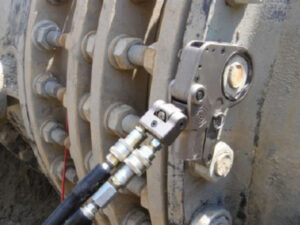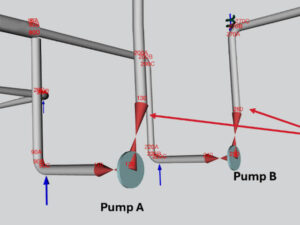In this exclusive Q&A interview with Joel Andreani, Senior Vice President of Knowledge Management, learn more about the Equity Engineering Practices® (EEPs), the value these documents bring to a facility, and gain insight into how Equity maintains the collections. The EEPs remain the industry’s most comprehensive commercially available engineering standards that are focused on helping our clients achieve safer and more reliable operations.
What are the EEPs?
The EEPs are a collection of engineering practices, piping classes, standard drawings, data sheets, inspection checklists, forms, and other documents. Originating over 25 years ago, today there are more than 1000 documents in the collection, over 600 standard drawings, over 300 piping classes, and over 3000 valve data sheets. But the EEPs are much more than just documents and data – they are the product of 25 years of continual development and improvement, the accumulation of decades of Equity Engineering SME experience, combined with more than 480 “client years” of EEP usage. And beyond the value of the wealth of information and knowledge provided by the EEPs, they are implemented on a modern, cloud-based website platform, developed and maintained by a dedicated team of specialists whose main objectives are quality and client satisfaction.
What is the purpose of the EEPs?
The EEPs are a major component of the Equity Knowledge group within Equity. The stated purpose of Equity Knowledge is:
To ensure the success of Equity and our clients by developing, collecting, organizing, and sharing technical knowledge.
This means we share knowledge both internally and externally. In the EEPs, Equity SMEs share their experience and technical knowledge with a broad, external community of owners in numerous process industries, oftentimes in a collaborative effort with EEP clients. Ultimately, the goal for the EEPs and in fulfilling Equity Knowledge’s mission statement is to help our clients operate safely, reliably, and profitably.
How are the EEPs maintained?
Because clients are able to customize their EEPs, each individual client has a set of custom practices tailored to meet their unique needs.
Regarding documentation and website delivery, the EEPs are maintained by a team of nearly two dozen document specialists (i.e., Document Coordinators), website and database specialists, and software developers whose only job is the maintenance of client practices collections. Every client has a dedicated Document Coordinator assigned to their collection, which allows each client and their document specialist to develop a strong rapport and ensures our clients’ needs are always being met.
On the technical side, the EEPs are maintained by dozens of full-time Equity Engineering SMEs, many of whom have past owner-user experience. For our SMEs, supporting the EEPs is a key component of their work responsibilities, not an afterthought. The original EEPs were developed by our SMEs, who continue to develop new collections alongside external industry experts. Every client has access to further guidance from these same SMEs while they use the EEPs in everything from major capital projects to day-to-day plant maintenance, inspection, and other functions. Many of these same Equity SMEs supporting the EEPs also serve on – or in several cases, chair – critical industry codes and standards committees and task groups.
How often do the EEPs get updated when codes or industry best practices change?
The EEPs are reviewed and reaffirmed on a maximum interval of five years. In some cases, industry codes and standards are on a shorter review and revision cycle, and the affected EEPs may be reviewed and reaffirmed more frequently as a result. Equity SMEs stay informed of industry best practices, incidents and failures that have occurred, and other events which could lead to any potential revisions in the EEPs between reaffirmation cycles. We also organize a Practices Users Group (PUG) meeting at least once per year, with some technical groups within the EEP program meeting more frequently. As our SMEs listen to our clients’ needs during the PUG and these interim technical group meetings, there may be further development of or revisions between reaffirmation cycles. As one example, the EEP user community asked us to expand our content to include Process Design Practices (PDPs), so we led the formation of a focus group with a subset of our EEP clients that met and developed the PDP content index and general outlines for specific PDPs. Next month, the new Process Design Practices (PDP) collection will be released to all clients.
What if I have a question or want more information on why a specific section or EP document was added to a collection?
Our SMEs and EEPs management team are great resources for answering client inquiries on why a specific EP was added or why a major revision was made. In fact, this interaction is mutually beneficial, as clients gain a better understanding of the content and, in turn, we gain a better understanding of how to improve on and expand our EEP content to better serve our clients going forward.
In general, EEPs are developed when either our SMEs have determined or clients have expressed the need for new or expanded content based on new industry best practices, technologies, lessons learned, or operations. In recent years, the collection has expanded with hundreds of new practices in the areas of Logistics/Midstream (LEPs), practices evaluating the re-use of equipment in new services (RUPs), and our most recent addition, the PDPs. Content for marine facilities, pipelines, and solids handling has also been added as our client base has grown to include industries where these are key elements of business. Meanwhile, we are continually adding content to the EEPs’ original technical sections as industry changes determine appropriate.
How can I learn more about the background to a specific EP?
The EEP documents themselves consist of text, tables, and figures that define the requirements, guidance, and in some cases options for designing, constructing, inspecting, and maintaining facility equipment and infrastructure. Within these documents, further background information – which we call the WHY and SAFETY WHY statements – is available to users at the click of a button. The WHY statements explain the background to the requirements discussed in a specific paragraph, table, or figure. The SAFETY WHY statements provide similar background information on EEP content that is related to an actual safety incident or potential safety concern. The WHY and SAFETY WHY feature is a great tool for educating EEP users without adding undesirable bloat to the requirements and other necessary guidance related to a specific subject. These WHY and SAFETY WHY statements further our purpose of transferring knowledge without ever compromising practicality.
Which industries do the EEPs support? And why is it valuable to have different EPs for different industries?
Initially, the majority of EEP clients were focused in the downstream sector of the oil & gas industry, but over the years, our client base has grown dramatically, as has the diversity of the industries they represent. While our downstream oil & gas EEP client base has never stopped growing, that sector now accounts for less than 40% of our clients as many new industries have joined the EEP program. Today, in addition to downstream oil & gas, EEP clients come from petrochemicals, specialty chemicals, midstream (logistics), liquid natural gas (LNG), agriscience, fertilizers, pharmaceuticals, and renewable fuels. This broad spectrum of clients brings with it a wider-ranging set of needs, keeping the EEP program continually moving forward and evolving, and has also resulted in great interactions and unique opportunities for knowledge sharing at our annual PUG events.
How does Equity maintain the quality and accuracy of the EEPs and all the different collections?
Equity is an ISO 9001 certified company. Quality is a major emphasis in everything we do, from our consulting business to our products. The EEPs have defined processes for development, revisions, and other aspects of our operations. These processes are in place to ensure consistency and quality. All Equity personnel supporting our EEP business are trained in these processes and apply them across the board across all EEP collections, products, and tools.
When a client updates, changes, or redlines their documents, how do the Document Coordinators ensure these changes meet the same quality and accuracy?
Not only is each client assigned a Document Coordinator, to ensure we apply the same rigorous quality standards to our clients’ Practices collections that we apply to our own, they are also assigned a specific quality assurance (QA) person.
How does Equity support the development of the Practices platform?
Equity has a dedicated team of website, database, and software developers who are responsible for developing and maintaining the platform on which the EEPs are delivered to our clients as well as the database used to house our extensive set of piping classes. This group has made significant upgrades to the EEP platform over the years, particularly to our search capabilities, the housing of client legacy documents and collections, freezing project content, administrative functions, usage analytics, and the addition of a closed Artificial Intellgence (AI) tool, Q.
Do the EEPs handle International Codes? Please explain how and why this is important.
Equity has an ongoing project to develop international content. Several of our clients have sites located outside of North America, so increasing international content is an important part of our mission. We have already developed international practices (IEPs) in many of our technical sections; these combine the experience and best practices of our SMEs with applicable codes and standards used in other parts of the world. We can also draw upon our global consulting experience as we continue this effort to internationalize our EEPs.
If English is not my first language, is it possible to search and get answers to my questions using my first language?
When developing our EEP AI tool, Q, an important specification was giving users the ability to type in Q with their native language and receive responses of the same accuracy as English-speaking clients. Q has achieved this goal with flying colors. In fact, some of Q’s early adopters are our international clients. To learn more about Q, check out the April 2025 Industry Insights article “Embracing the AI Revolution: Unveiling Q – The Future of the EEPs.”
For more information on the Equity Engineering Practices, please contact Susie Szymanski and Joel Andreani by filling in the form below.





